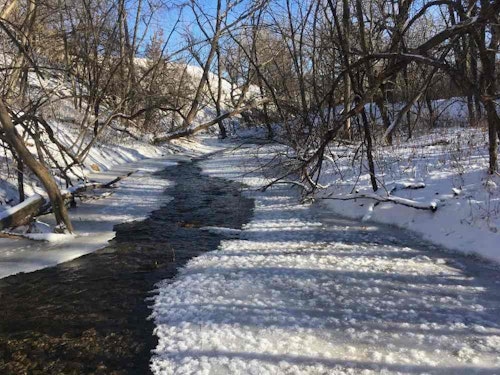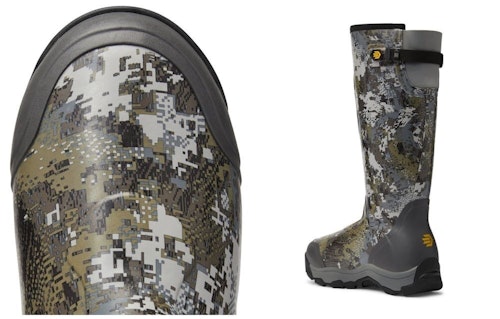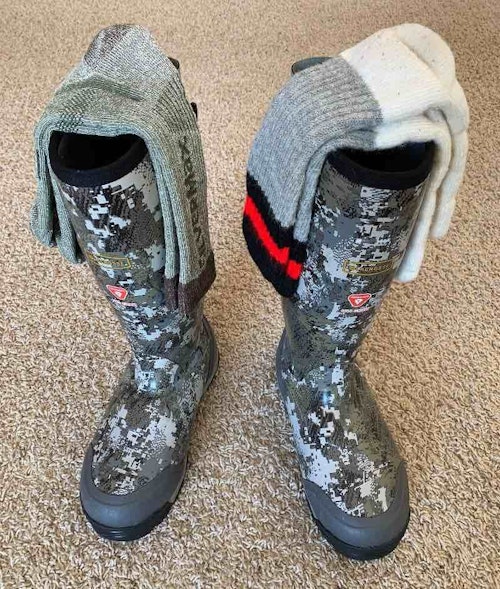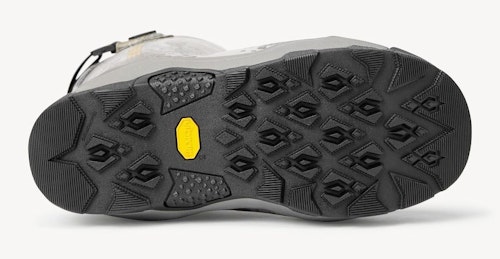Some people receive grief because they have extensive shoe collections. Well, I probably deserve the same treatment due to my arsenal of hunting boots.
If I were asked to explain it, I could simply pass it off as being old — over time, you end up adding one pair of boots here, one pair there, until you finally have enough to outfit a small army.
Believe it or not, even though I own a wide selection of hunting footwear, I did have one gap in my collection. There are times in South Dakota, most often during late November and through December, when the air temperature over a weekend is very cold. However, those brutal temps haven’t existed for the necessary consecutive days to sufficiently freeze over a spring-fed creek so I can walk on the ice.

In other words, I need to get across the creek, which is about 12 feet wide and 10 inches deep in my various crossing spots, to access treestands or ground blinds in my pursuit of late-season whitetails. If I can’t cross on ice that’s thick enough to support my weight, then I must walk in the water.
FYI: Ice will form first on the deeper pools with less current; fall through here and it could be nearly waist deep; not good! The shallower riffle areas remain ice-free the longest, so this is where I prefer to cross.
I own many pairs of knee-high rubber boots to handle the water depth. No problem there. The challenge is none of these models offer enough insulation to keep my feet warm while waiting in my stand for 3-5 hours when the air temp is near or below zero. Yes, I could carry heavily insulated pac boots and change into them after crossing the creek, but this is a big hassle, especially in the dark, and remember, it’s brutally cold. One of my best treestands is a half-mile hike from the truck; I’m already carrying my bow, other accessories, food, plus my parka so I don’t overheat during the hike, and the last thing I want to add to my daypack is a second pair of boots.
Thankfully, my problem had a solution — the LaCrosse Alpha Evolution.

Construction Is Key
As I said, I already own several pairs of knee-high rubber boots. And some of my favorites are made by LaCrosse. I love the original non-insulated Grange, which is my go-to choice for spring turkey hunting and early season whitetails on this same South Dakota river-bottom property. I also love the foam-insulated Burly, which is great when the air temperature is 35-60 degrees. I own other knee-high rubber boots (other brands) with up to 1,200 grams of PrimaLoft insulation, but my feet get cold in them when the air temp drops to zero or below.
What sets apart the LaCrosse Alpha Evolution from the competition is the 17-inch rubber boot has 1,600 grams of PrimaLoft Gold Insulation, which according to LaCrosse “performs in wet or dry conditions and maintains its thermal properties no matter how many times you wear your boots.” In addition, these boots have a PrimaLoft Aerogel toe cap, which is “used by NASA to insulate space suits. Aerogel is the world’s lightest solid comprised of more than 95% air. This toe cap provides superior insulation with minimal bulk or weight, and doesn’t pack down over time.”
Okay, I don’t pretend to understand how Aerogel works, but I can tell you that Alpha Evolution boots keep my feet dry crossing the creek and then warm while waiting on a whitetail, even when the air temperature is at or a few degrees below zero.
Key Takeaways
I look forward to wearing my LaCrosse Alpha Evolution boots for many years to come. Without exception, every pair of LaCrosse boots I’ve owned has shown tremendous durability. Of course, I can’t specifically address durability in this review, because I wore them only during the 2023 whitetail season. That said, I would like to pass along a few key takeaways from my full-season field test:
The boots aren’t light (6.4 pounds per pair), but I don’t see this as a negative. The premium natural rubber is thick; there’s even extra rubber added in high-wear areas, the toe and heel (photo below). I’ve owned similar boots (less insulation) from other brands and they were lighter because the rubber was thinner, and you know what? The rubber failed (cracked, ripped, etc.) on those boots after a few seasons. I’m confident that won’t happen with the thicker and tougher LaCrosse Alpha Evolution.

Because I wear heavyweight bibs during these late-season bowhunts, I need the room, at least when crossing the creek, to stuff the bottom of my bibs into the boot tops. The last thing I want on my stand is frozen pant bottoms while I sit in my stand. These boots have a wide opening, and they include a gusset to adjust the opening (photo above). It’s a proven system.
In South Dakota, I have to hike up and down a couple of steep hills, and during late season, these hills are always covered in snow, sometimes crusty and slippery. The Alpha Evolutions have a Vibram ICETREK outsole, and it does a fantastic job of keeping me upright. The tread pattern isn’t so deep/aggressive, however, that it gathers snow.
As for sizing — because I knew I’d be wearing these boots in only the coldest of conditions, instead of ordering my usual size 10, I chose a size 11. This allows me to wear a medium-thick wool sock, and then a heavyweight wool sock over it. Wearing two wool socks might seem like overkill to many of you reading this review, but staying home on the couch because it’s too cold outside is never an option — at least for me.

Final Thoughts
As I think back to my 2023 field test of the LaCrosse Alpha Evolution, I’m reminded of my final morning deer hunt of the season in South Dakota. It was mid-December, cold, and an inch of snow had fallen during the night. My best chance of success was to hunt the far west side of my permission property, but getting there required a half-mile hike through the river-bottom, and I’d have to cross the creek twice.
During previous years, I would have had two options: wear moderately insulated rubber boots for the hike, then switch to warmer, felt-lined pac boots after my final creek crossing — I’d have to carry in the second pair — or choose a treestand that didn’t require walking through the creek. If I’m being honest, I think I would have chosen the no-water option.
Having the 1,600-gram Alpha Evolutions on hand made my choice easy. I could hike to my favorite stand, cross the creek twice without a second thought, and sit in relative comfort for at least 3 hours. I say “relative” because when temps are in the single digits and it’s windy, as is often the case in South Dakota, it’s never totally comfortable and pleasant.
As the photo below shows, a well-placed doe decoy lured in a decent-size buck that morning; the shot distance was only 10 yards. I love it when a plan comes together!

It’s a good feeling to know that on all of my future river-bottom deer hunts, I’ll be able to access any of my treestands without worrying about the creek or the air temperature. Click here for more information about LaCrosse Alpha Evolution boots.







